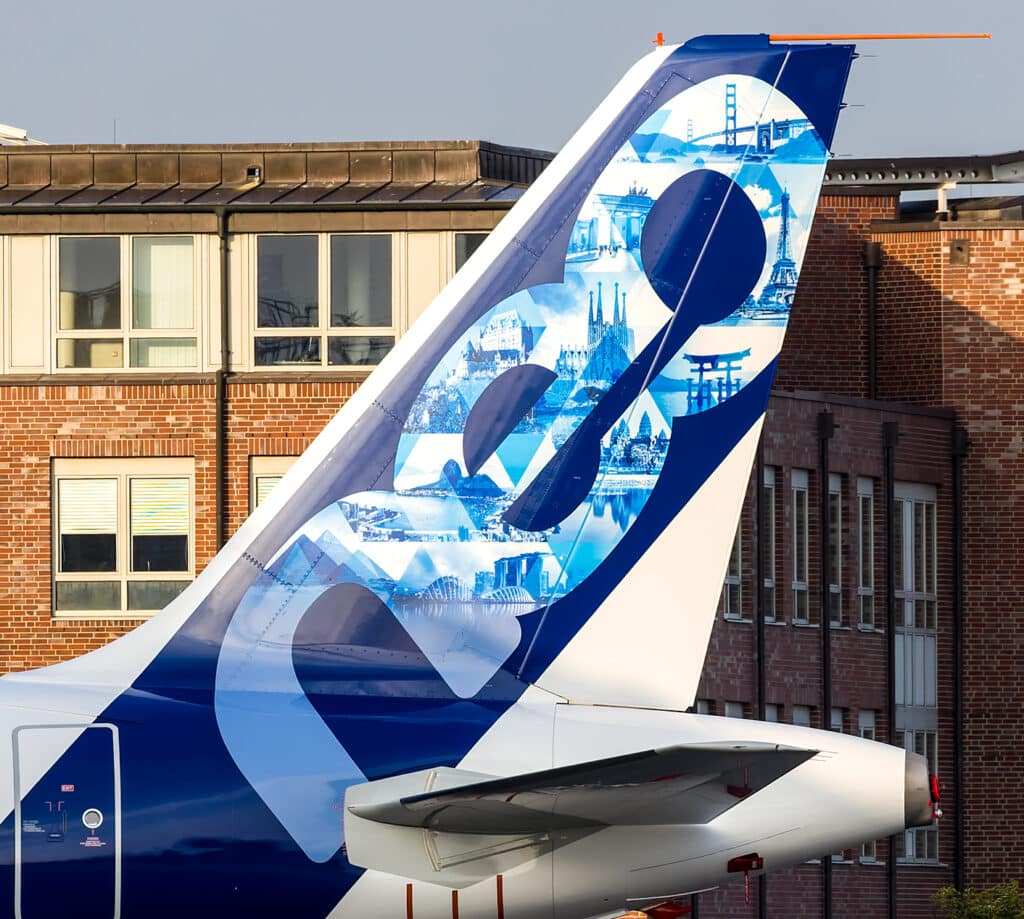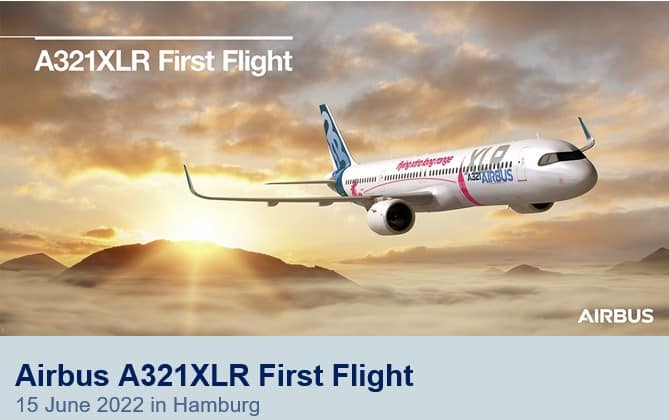Aerospace
Airbus A321XLR jet takes off for the first time from Hamburg
Hamburg, 15 June 2022 –The most anticipated aircraft, the Airbus A321 XLR, took flight for the first time and demonstrated its remarkable performance. The test flight took out from Hamburg-Finkenwerder Airport at 11:05 a.m. and lasted four hours and 35 minutes.
This aircraft is an updated variant of the A321 Neo, however it travels further and can carry 185 to 236 passengers. It has a stretched fuselage and entered service in 1994 as the first variant of the baseline A320.
The crew evaluated the aircraft’s flight controls, engines, and key systems, including flight envelope protections, at high and low speeds during the trip.
First A321LR takes to the skies for its maiden flight
After successful first flight of @Airbus #A321XLR test pilot Thierry Diez faces enthusiastic staff #avgeek pic.twitter.com/arzGDoaCnj
— Andreas Spaeth (@SpaethFlies) June 15, 2022
In comparison to the competitor Boeing 737 MAX, the A320neo had a market share of 60%. It received ordered 8,078 A320neo family aircraft as of April 2022.
12 things to know about Airbus A320 family
Welcome back to @Airbus #Finkenwerder #A321XLR after first flight of 3:45mins #avgeek pic.twitter.com/qvzYdwCr3M
— Andreas Spaeth (@SpaethFlies) June 15, 2022
It is scheduled to fly nearly 9,300 kilometres, and Airbus is developing upgraded landing gear to hold additional capacity. It would have an MTOW of more than 100 tonnes and 1,300 kilometres longer range than the A321LR with the same wing and engines, as well as enhanced fuel capacity.
First A321LR takes to the skies for its maiden flight
Most airlines are striving for the ideal narrow-body aircraft that can carry more passengers and go further. This is the first aircraft that can provide for both, and it only serves one market niche. It competes with the Boeing 737 Max, however it flies more than that aircraft.
Air Astana takes delivery of its first A321LR
The A321XLR is the next evolutionary step in the A320neo single-aisle Family of aircraft, fulfilling market demands for improved range and payload while adding value to carriers by making economically viable aircraft available.
The A321XLR will be an unparalleled single-aisle aircraft with 30% lower fuel consumption per seat than previous-generation aircraft, as well as decreased NOx emissions and noise. The A320neo Family will have received over 8,000 orders from over 130 customers globally by the end of May 2022. More than 500 A321 XLR orders were received from more than 20 customers.
And liftoff! @Airbus #A321XLR airborne at 11.05 CEST #Hamburg #Finkenwerder @HamburgAviation #avgeek pic.twitter.com/jX6HKU89Vm
— Andreas Spaeth (@SpaethFlies) June 15, 2022
The A321XLR will open up new routes while providing unrivalled economic and environmental performance. The ship is expected to enter service in early 2024. In the comments box, please share your thoughts about this aircraft.

Aerospace
Boeing Transfers Rocket Stage to NASA, Paving Way for Human Moon Mission

Boeing has achieved a significant milestone by providing NASA with the second core stage of the Space Launch System (SLS) rocket.
This crucial component, crafted at NASA’s Michoud Assembly Facility (MAF), is set to propel the Artemis II crew into lunar orbit, marking humanity’s return to deep space after a 50-year hiatus.
The monumental Boeing-built rocket stage, the largest element of the Artemis II mission, will embark on a journey aboard the Pegasus barge, traveling 900 miles to NASA’s Kennedy Space Center.
Comparison of two legendary aircraft B777x vs B747 aircraft:Click here
Upon arrival, it will be meticulously integrated with other essential Artemis II components, including the upper stage, solid rocket boosters, and NASA’s Orion spacecraft within the iconic Vehicle Assembly Building. This intricate integration process is a vital step toward the eagerly anticipated Artemis II launch, slated for 2025.
“Boeing-built products helped land humankind on the moon in 1969, and we’re proud to continue that legacy through the Artemis generation,” remarked Dave Dutcher, vice president and program manager for Boeing’s SLS program. “Together, with NASA and our industry partners and suppliers, we are building the world’s most capable rocket and paving the way to deep space through America’s rocket factory in New Orleans.”
NASA, Lockheed Martin Reveal X-59 Quiet Supersonic Aircraft:Click here
The delivery of Core Stage 2 marks a significant achievement in the evolution of the SLS rocket. Towering over 200 feet and powered by four RS-25 engines, this core stage, coupled with two solid-fueled booster rockets, will generate a staggering 8.8 million pounds of thrust. This immense power is crucial to launching Artemis II and future missions into the vast expanse of space.
The SLS rocket stands unparalleled in its capability to transport both crew and substantial cargo to the moon and beyond in a single launch. Its extraordinary capacity will facilitate the delivery of human-rated spacecraft, habitats, and scientific missions to destinations including the moon and Mars, ushering in a new era of space exploration.
-

 Travel1 week ago
Travel1 week agoAir India to Expand US Operations with Three New Routes After a Decade
-

 Travel2 weeks ago
Travel2 weeks agoWhy We Should Avoid These Stamps in a Passport
-

 Airlines1 month ago
Airlines1 month agoInvestigations Reveal Fake Chinese Titanium in Boeing and Airbus Jets
-

 Tech4 weeks ago
Tech4 weeks agoChina’s CATL Plans 1,800-Mile Electric Plane Launch by 2027
-

 Airport3 days ago
Airport3 days agoTop 10 Largest Airports in the World by Size
-

 Aerospace4 weeks ago
Aerospace4 weeks agoChina’s Fighter Jets Turn Wings into Autonomous Drones
-

 Airlines4 days ago
Airlines4 days agoAir India Rolls Out A350s for Delhi-New York JFK and Newark Routes
-

 Defence3 weeks ago
Defence3 weeks agoBoeing Enhances Chinook with New Engines and Block II Upgrades at $96 Million









